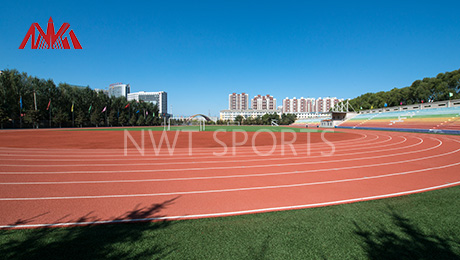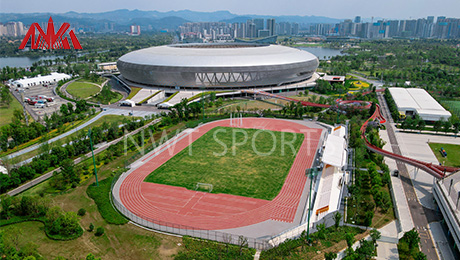Running tracks are essential components of athletic facilities, offering athletes a reliable and safe surface for training and competitions. For facility managers and sports enthusiasts alike, understanding the costs and maintenance requirements of these tracks is crucial. At NWT Sports, we specialize in high-quality track solutions that cater to diverse needs and budgets. This article will explore synthetic running track costs, the benefits of different running track materials, the importance of running track repair companies, and the factors affecting tartan track costs in South Africa.
1. Synthetic Running Track Cost: What to Expect
One of the first questions asked when planning to install a new track is, "What is the synthetic running track cost?" The price can vary significantly based on a range of factors, including the type of material, the size of the track, and the complexity of the installation process. Typically, synthetic running tracks are more expensive than traditional asphalt tracks, but they offer superior durability, comfort, and performance, making them a worthwhile investment.
The synthetic running track cost can range from $50,000 to over $200,000, depending on the track's length, thickness, and the quality of the running track material used. For example, a high-performance, 400-meter track with polyurethane or rubber-based materials will cost more than a smaller, entry-level facility. Additionally, the synthetic running track cost can increase if there are additional requirements, such as drainage systems, lighting, and fencing.
At NWT Sports, we help clients navigate the complexities of synthetic running track costs by offering customized solutions that fit their budget. We understand that each project is unique, and our team is here to provide guidance on selecting the best running track material and ensuring optimal results.
2. Choosing the Right Running Track Material
The running track material you choose plays a significant role in the overall cost, durability, and performance of your track. Modern tracks are typically made from materials like polyurethane, rubber, and latex. Each of these materials has its advantages, and the choice depends on factors such as climate, usage frequency, and desired performance.
Polyurethane tracks are among the most popular due to their durability and excellent shock absorption. These tracks offer a smooth, consistent surface that helps minimize injuries and provides great traction for runners. Rubber tracks are also popular for their affordability and resilience. These tracks can be made from recycled rubber, making them an eco-friendly choice.
Another option is tartan tracks, which are widely used in schools and community athletic facilities. These tracks offer a balance between cost and performance, making them ideal for medium-budget projects. When considering running track materials, it's essential to think about not only the initial installation cost but also long-term maintenance. The right running track material will ensure your track remains in excellent condition for years, reducing the need for frequent repairs and resurfacing.


3. Running Track Repair Companies: Why Regular Maintenance is Essential
Over time, even the best running tracks can suffer from wear and tear. Cracks, fading, and uneven surfaces can affect performance and safety, making it essential to work with professional running track repair companies. Regular maintenance can extend the life of your track, save on costly replacements, and ensure a safe environment for athletes.
Running track repair companies specialize in identifying potential issues early on, such as minor cracks that can quickly escalate into major problems if left unattended. They offer services ranging from surface cleaning and repainting to complete resurfacing and patchwork repairs. For facilities with synthetic running tracks, these repair companies can also apply fresh coatings to maintain the track’s grip and color, ensuring it continues to perform well.
At NWT Sports, we not only provide new track installations but also partner with trusted running track repair companies to offer our clients comprehensive maintenance solutions. We understand that a well-maintained track can serve athletes better, which is why we emphasize regular check-ups and prompt repairs to address any issues before they become severe.
4. Tartan Track Cost in South Africa: Factors to Consider
The tartan track cost in South Africa varies based on the same factors that affect synthetic running track costs globally—materials, size, and installation complexity. However, there are additional considerations specific to the South African market, such as local climate conditions and import fees for certain running track materials.
In South Africa, tartan tracks are popular for their affordability and reliable performance. These tracks are ideal for schools, recreational facilities, and community sports centers where budgets may be tighter, but performance is still a priority. The tartan track cost in South Africa can range from R600,000 to over R1,500,000, depending on whether the track is new or being resurfaced. Other factors include the quality of the underlayer and topcoat, and whether additional features like drainage systems and lighting are required.
Another significant factor affecting the tartan track cost in South Africa is the availability of local suppliers and skilled installers. Partnering with a reputable company like NWT Sports ensures that you have access to quality materials and experienced professionals who understand the nuances of building tracks in various conditions. This not only helps in managing costs but also ensures a smooth installation process with fewer complications.
5. Maintenance Tips to Minimize Synthetic Running Track Cost
Maintaining your running track is essential to maximizing your investment and keeping future costs low. Regular upkeep prevents the need for expensive repairs and ensures that athletes can train on a safe, high-quality surface. Here are a few tips for maintaining your synthetic track:
· Regular Cleaning: Dirt, leaves, and other debris can accumulate on the surface, which may cause damage over time. Regular cleaning helps keep the track in good condition.
· Inspect for Damage: Periodic inspections by professional running track repair companies can help identify cracks, tears, or other damage that might need attention.
· Proper Drainage: Ensure your track has a proper drainage system to prevent water from pooling on the surface, which can cause damage.
· Re-coating as Needed: Over time, the top layer of the track may wear down, reducing grip and performance. Re-coating the surface can restore these properties without the need for a complete overhaul.
By following these maintenance practices, you can extend the life of your track and minimize the overall synthetic running track cost. At NWT Sports, we provide guidance on maintenance routines to help our clients get the best value out of their running tracks.
Conclusion: Investing in Quality Running Tracks with NWT Sports
When planning a running track project, understanding synthetic running track costs, choosing the right running track material, and maintaining the track are key factors in ensuring long-term success. At NWT Sports, we pride ourselves on offering high-quality products and expert installation services that meet the specific needs of each client. Whether you're looking to install a new track, repair an existing one, or understand tartan track cost in South Africa, we have the experience and expertise to help.
For more information on synthetic running track costs, running track material options, or to connect with reliable running track repair companies, contact NWT Sports today. Our team is ready to assist you in creating a safe, durable, and high-performance running track tailored to your requirements.
Post time: Oct-12-2024
